| [1]Martetschläger F, Kraus TM, Schiele CS ,et al. Treatment for unstable distal clavicle fractures (Neer 2) with locking T-plate and additional PDS cerclage. Knee Surg Sports Traumatol Arthrosc. 2013;21(5):1189-1194.
[2]Tan HL, Zhao JK, Qian C,et al. Clinical results of treatment using a clavicular hook plate versus a T-plate in neer type II distal clavicle fractures. Orthopedics. 2012;35(8):e1191-1197.
[3]Rieser GR, Edwards K, Gould GC, et al. Distal-third clavicle fracture fixation: a biomechanical evaluation of fixation. J Shoulder Elbow Surg. 2013;22(6):848-855.
[4]Liu Q, Miao J, Lin B,et al. Surgical treatment for unstable distal clavicle fracture with micromovable and anatomical acromioclavicular plate. Int J Med Sci. 2012;9(4):301-305.
[5]Robertson GA, Wood AM, Bakker-Dyos J,et al.The epidemiology, morbidity, and outcome of soccer-related fractures in a standard population. Am J Sports Med. 2012; 40(8):1851-1857.
[6]Banerjee R, Waterman B, Padalecki J,et al. Management of distal clavicle fractures. J Am Acad Orthop Surg. 2011;19(7): 392-401.
[7]Yang SW, Lin LC, Chang SJ,et al. Treatment of acute unstable distal clavicle fractures with single coracoclavicular suture fixation. Orthopedics. 2011;34(6):172.
[8]Oh JH, Kim SH, Lee JH ,et al. Treatment of distal clavicle fracture: a systematic review of treatment modalities in 425 fractures. Arch Orthop Trauma Surg. 2011;131(4):525-533.
[9]Klein SM, Badman BL, Keating CJ, et al. Results of surgical treatment for unstable distal clavicular fractures. J Shoulder Elbow Surg. 2010;19(7):1049-1055.
[10]Yu C, Sun YH, Zhao CQ, et al. Treatment of distal clavicle fracture with distal radius volar locking compression plate. Chin J Traumatol. 2009;12(5):299-301.
[11]Bhatia DN, Page RS. Surgical treatment of lateral clavicle fractures associated with complete coracoclavicular ligament disruption: Clinico-radiological outcomes of acromioclavicular joint sparing and spanning implants. Int J Shoulder Surg. 2012; 6(4):116-120.
[12]Ishimaru D, Ogawa H, Wakahara K,et al. Hip pads reduce the overall risk of injuries in recreational snowboarders. Br J Sports Med. 2012;46(15):1055-1058.
[13]付敏. 两种方法治疗肩锁关节脱位和锁骨远端骨折的临床对比分析[J].中外医学研究,2013,11(2):130-131.
[14]余胜文,刘捍东,张冰,等. 锁骨钩钢板治疗锁骨远端骨折及肩锁关节脱位86例体会[J].临床骨科杂志,2013,16(1):107.
[15]丁红,许晓跃,许欣,等. 两种不同手术方法治疗伴有喙锁韧带损伤的锁骨远端骨折疗效分析[J].中国骨与关节损伤杂志,2012, 27(1):58-59.
[16]Zhu YY, Cui HY, Jiang PQ,et al. Complications of treatment of acromioclavicular joint dislocation and unstable distal clavicular fracture with clavicular hook plate. Zhongguo Gu Shang. 2013;26(11):927-931.
[17]Deng Z, Cai L, Ping A, et al. Anatomical Research on the Subacromial Interval Following Implantation of Clavicle Hook Plates. Int J Sports Med. 2014. [Epub ahead of print]
[18]Reška M, Kone?ný J, Kašpar M, et al. Stabilisation of the dislocated acromioclavicular joint and lateral fractures of the clavicle using a hook plate. Rozhl Chir. 2013;92(3):143-150.
[19]Jensen G, Katthagen JC, Alvarado LE ,et al. Has the arthroscopically assisted reduction of acute AC joint separations with the double tight-rope technique advantages over the clavicular hook plate fixation? Knee Surg Sports Traumatol Arthrosc. 2014;22(2):422-430.
[20]Pereira-Graterol E, Álvarez-Díaz P, Seijas R,et al. Treatment and evolution of grade III acromioclavicular dislocations in soccer players. Knee Surg Sports Traumatol Arthrosc. 2013; 21(7):1633-1635.
[21]Tiren D, van Bemmel AJ, Swank DJ,et al. Hook plate fixation of acute displaced lateral clavicle fractures: mid-term results and a brief literature overview. J Orthop Surg Res. 2012;7:2.
[22]Wu K, Chang CH, Yang RS. Comparing hook plates and Kirschner tension band wiring for unstable lateral clavicle fractures. Orthopedics. 2011;34(11):e718-723.
[23]Good DW, Lui DF, Leonard M,et al. Clavicle hook plate fixation for displaced lateral-third clavicle fractures (Neer type II): a functional outcome study. J Shoulder Elbow Surg. 2012; 21(8):1045-1048.
[24]Ding M, Ni J, Hu J,et al. Rare complication of clavicular hook plate: clavicle fracture at the medial end of the plate. J Shoulder Elbow Surg. 2011;20(7):e18-20.
[25]Di Francesco A, Zoccali C, Colafarina O,et al. The use of hook plate in type III and V acromio-clavicular Rockwood dislocations: clinical and radiological midterm results and MRI evaluation in 42 patients. Injury. 2012;43(2):147-152.
[26]Li N, Li G, Wang SS, et al. AO clavicular hook plate for the treatment of fresh Tossy type III acromioclavicular joint dislocation in 28 patients. Zhongguo Gu Shang. 2011;24(3): 205-207.
[27]Bhattacharyya R, Sharma K, Mukherjee P. Clavicle Hook Plate for Neer Type II Lateral Clavicle Fractures. J Orthop Trauma. 2011;25(3):e30.
[28]Liu HH Chou YJ, Chen CH, et al. Surgical treatment of acute acromioclavicular joint injuries using a modified Weaver-Dunn procedure and clavicular hook plate. Orthopedics. 2010;33(8). doi: 10.3928/01477447-20100625-10.
[29]Bisbinas I, Mikalef P, Gigis I, et al. Management of distal clavicle fractures. Acta Orthop Belg. 2010;76(2):145-149.
[30]周荣.锁骨外侧锁定钢板治疗锁骨远端骨折[J].临床骨科杂志, 2012,15(5):599. |
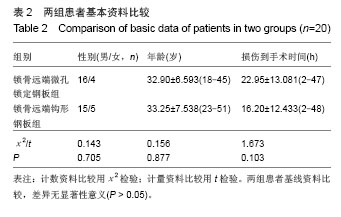
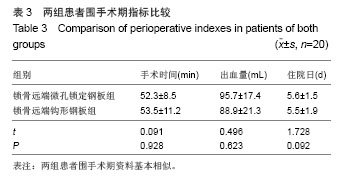

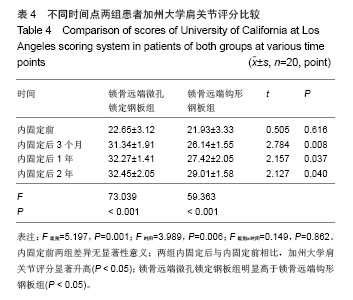
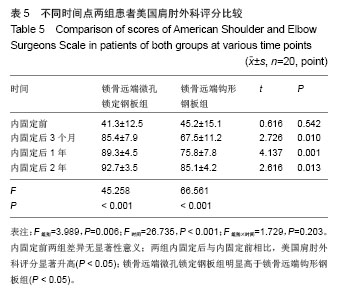
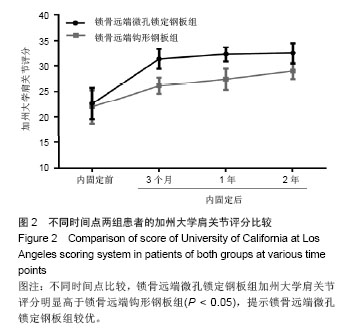
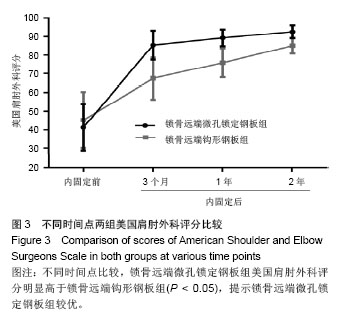
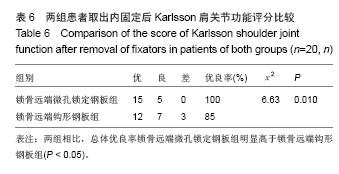
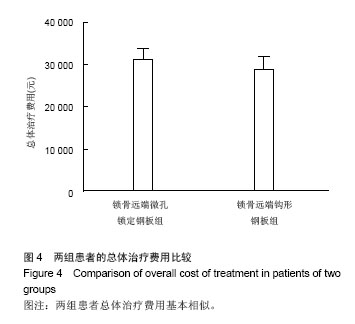
.jpg)